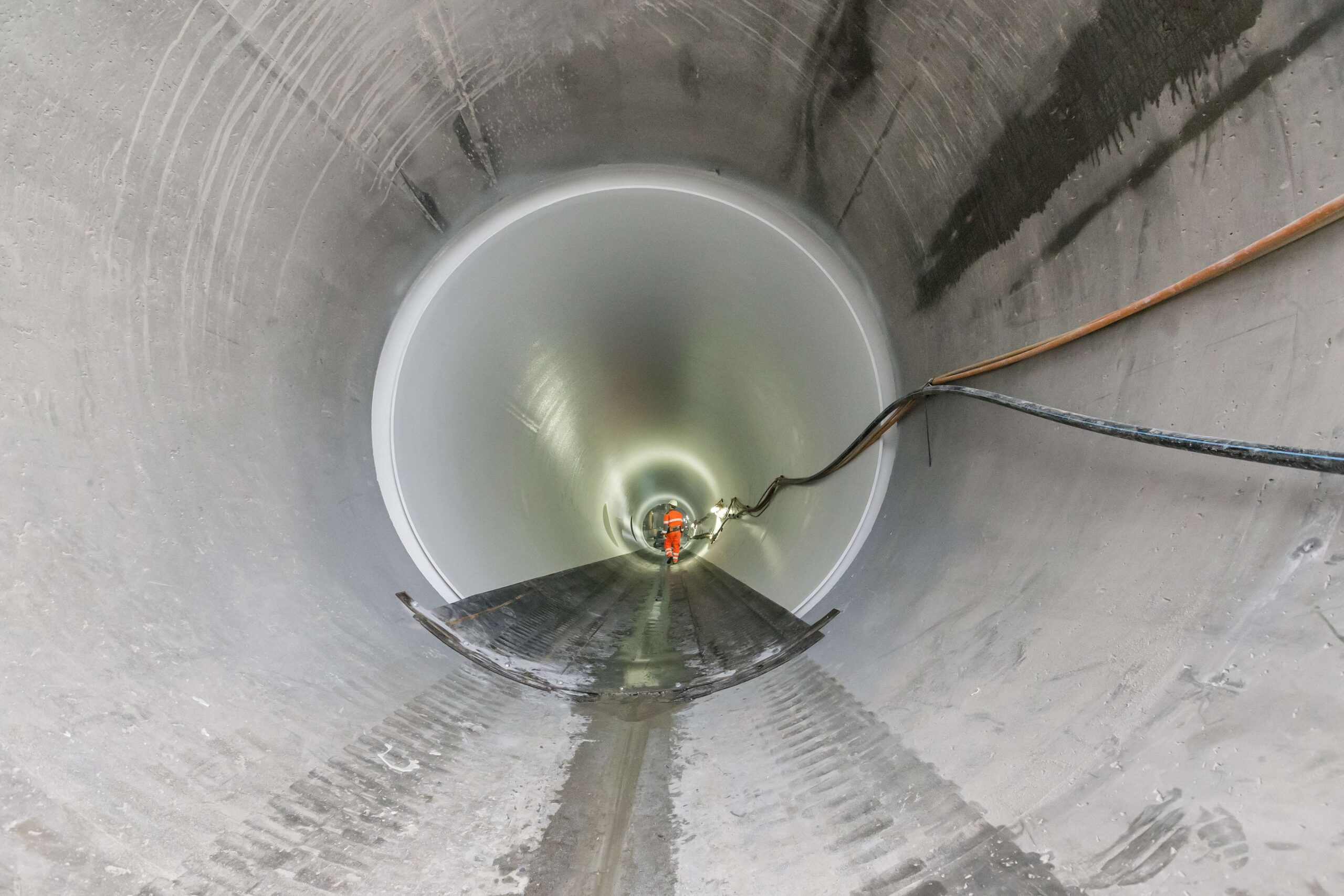Flexible run-of-river power plants

Water gallery of the Gletsch-Oberwald power plant. The water from the Rhone flows through this tunnel to the turbines with a drop of around 300 m. The installed capacity is 14 MW. The installed capacity is 14 MW, but with an annual production of 41 GWh, the average output of the power plant is only 4.7 MW. The plant is built underground to have as little impact as possible on the environment. Only a few Swiss small hydropower plants use the principle of such high-pressure run-of-river power plants. However, they account for a large part of the total electricity production from small hydropower plants.
Source: FMV
At a glance
Since 2018, the Gletsch-Oberwald power plant has been supplying electricity for 9000 households. It uses the gradient of the Rhone between Gletsch (1750 m) and Oberwald (1450 m) to generate energy. How much electricity is produced depends on the water flow of the Rhone and cannot be adjusted to demand. Especially in winter, the Rhone's discharge is often insufficient to operate the turbines at minimum capacity and the water is diverted past the power plant. Researchers from various institutes, led by the University of Applied Sciences of Western Switzerland, have therefore investigated how run-of-river power plants can be operated more flexibly in order to provide lucrative balancing power. For this purpose, more water is directed to the turbines during periods of high electricity demand than actually flows from the Rhone. For this purpose, sedimentation basins and part of the headrace tunnel are emptied. When the electricity demand is lower, these volumes are refilled with water and thus used as storage. These storage volumes can also be filled at low discharge rates while the turbines are temporarily at a standstill. In this way, electricity can be produced temporarily even in winter when the Rhone actually has too little water.
A pilot operation has been successful so far: production in winter could be doubled without major structural adjustments, simply by using the existing storage volumes in the settling basin, pressure chamber and part of the headrace tunnel. In addition, the operator was able to offer balancing power with a capacity of around 1.5 MW throughout the year. With good forecasts of discharge volumes and electricity demand, the power plant operator can control production and thus achieve better prices, which decisively increases the profitability of the power plant.
However, this flexible use means that higher fluctuations in discharge are to be expected downstream of the power plant in the natural course of the Rhone. From the point of view of water ecology, this so-called hydropeaking can be problematic. However, accompanying ecological studies showed a low impact on aquatic organisms. In order to keep the impact on the river ecology as small as possible, the power plant is controlled in such a way that the discharge peaks are no more than 1.5 times as large as the base discharge. In winter, the discharge is even smoothed out due to the lower number of shutdowns and restarts. Nevertheless, for each power plant that is to be operated in this way, it must be clarified in advance whether changing discharge volumes could have a negative impact on the ecosystem.

At the Gletsch-Oberwald power plant, the water from the Rhone is collected and fed into a desander basin (settling basin for the entrained fines). When the basin is full, the water flows over a partition wall to the pressure chamber and from there into the tunnel that leads to the turbines in Oberwald about 300 m below. In normal operation, the desander basin, pressure chamber and gallery are filled with water. For flexible operation, the (1) volumes of part of the pressurised water gallery and the pressure chamber and (2) the volume of the desander basin can be used. The water content of these volumes can be controlled with the operation of the turbines and by opening and closing a gate (red) in the valley-side partition wall of the desander basin. The water level in the pressurised water tunnel can only be lowered to a limited extent, because if the water pressure is reduced too much, the geometry of the water jet hitting the Pelton turbine is no longer correct and the turbine loses efficiency and ages more quickly as a result of the changed load.
Source: SFOE
Contact and team
Project management
Cécile Münch-Alligné
HES-SO Valais
Rte du Rawyl 47
1950 Sion
078 625 30 02
cecile.muench@hevs.ch

